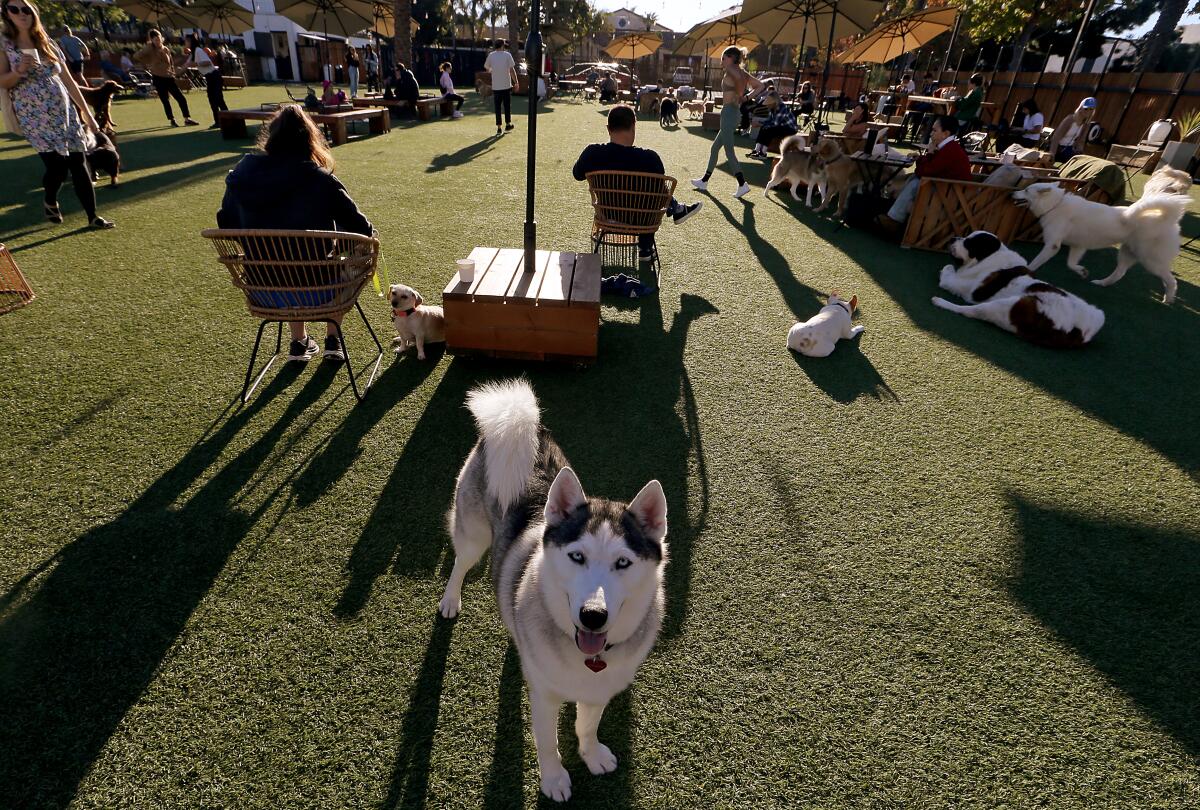6,000 L.A. buildings are not retrofitted for earthquakes. Look up if yours is.
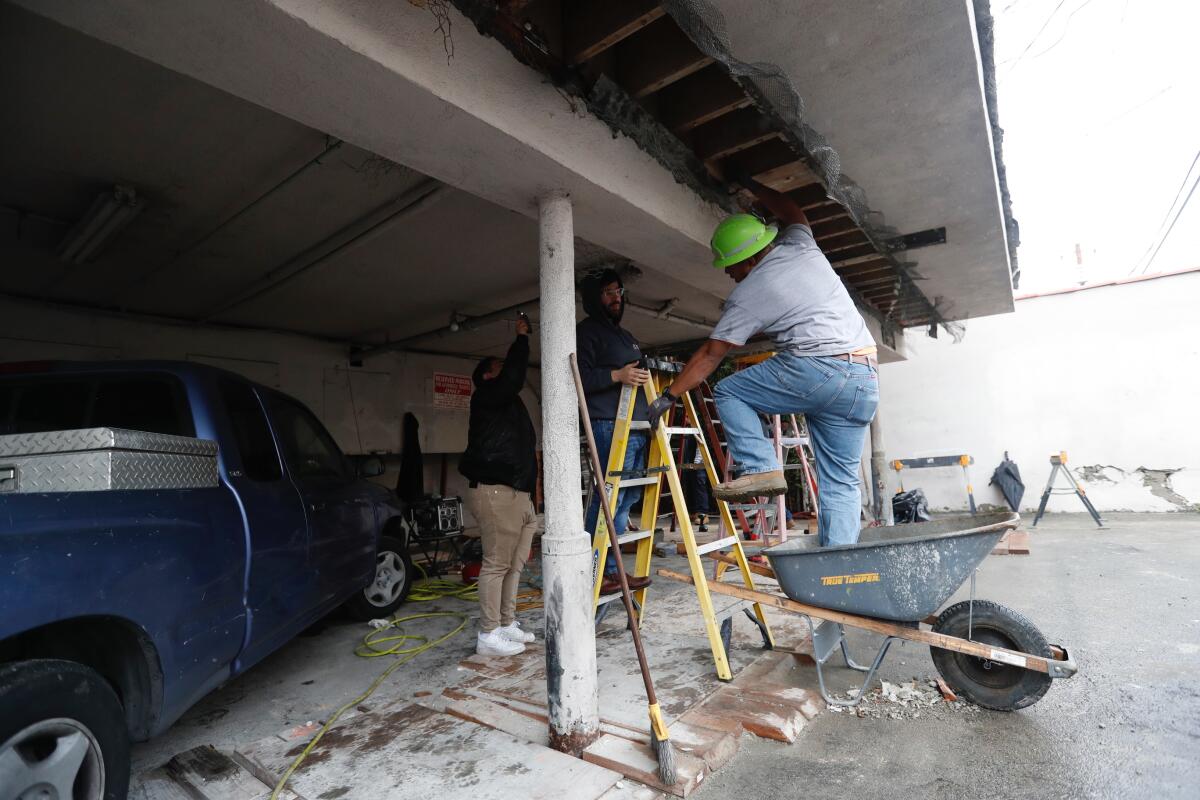
Good morning. It’s Tuesday, Dec. 12. I’m Sandhya Kambhampati, a data reporter for The Times. Here’s what you need to know to start your day.
- Is your home or office retrofitted for earthquakes? 6,000 L.A. buildings aren’t
- Toxic chemical reactions fuel crises at L.A. County landfills
- How to make and where to find Latino holiday drinks
- And here’s today’s e-newspaper
Sign up for Essential California
The most important California stories and recommendations in your inbox every morning.
You may occasionally receive promotional content from the Los Angeles Times.
Is your home or office retrofitted for earthquakes? 6,000 L.A. buildings aren’t
If you live in Los Angeles, chances are you’ve seen seismic retrofitting work being done to a building. I saw enough of them myself that I got curious about these projects — and as a data reporter, I am always looking for new datasets to explore.
A retrofit strengthens vulnerable buildings to better withstand shaking from earthquakes, making them less likely to collapse or suffer damage. But my colleagues and I found that at least 6,000 structures in the Los Angeles area are not retrofitted.
Using public records requests, building permits, Google Maps, drive-by visits and lots of negotiating with officials from various cities, we compiled a dataset covering four cities. In the city of Los Angeles, we found nearly 75% of soft-story buildings — such as low-rise apartment buildings above carports — and 6% of non-ductile concrete buildings — a type of construction that is especially brittle in an earthquake — are retrofitted.
The result of our work is a searchable database to help you determine the status of buildings you may live or work in. It also offers a snapshot of retrofitting in Los Angeles everywhere the data are collected. We found that many structures are not tracked because they were either built after 1996, the city in which they are located has no recent requirement to retrofit that type of building, or the city provided incomplete data.
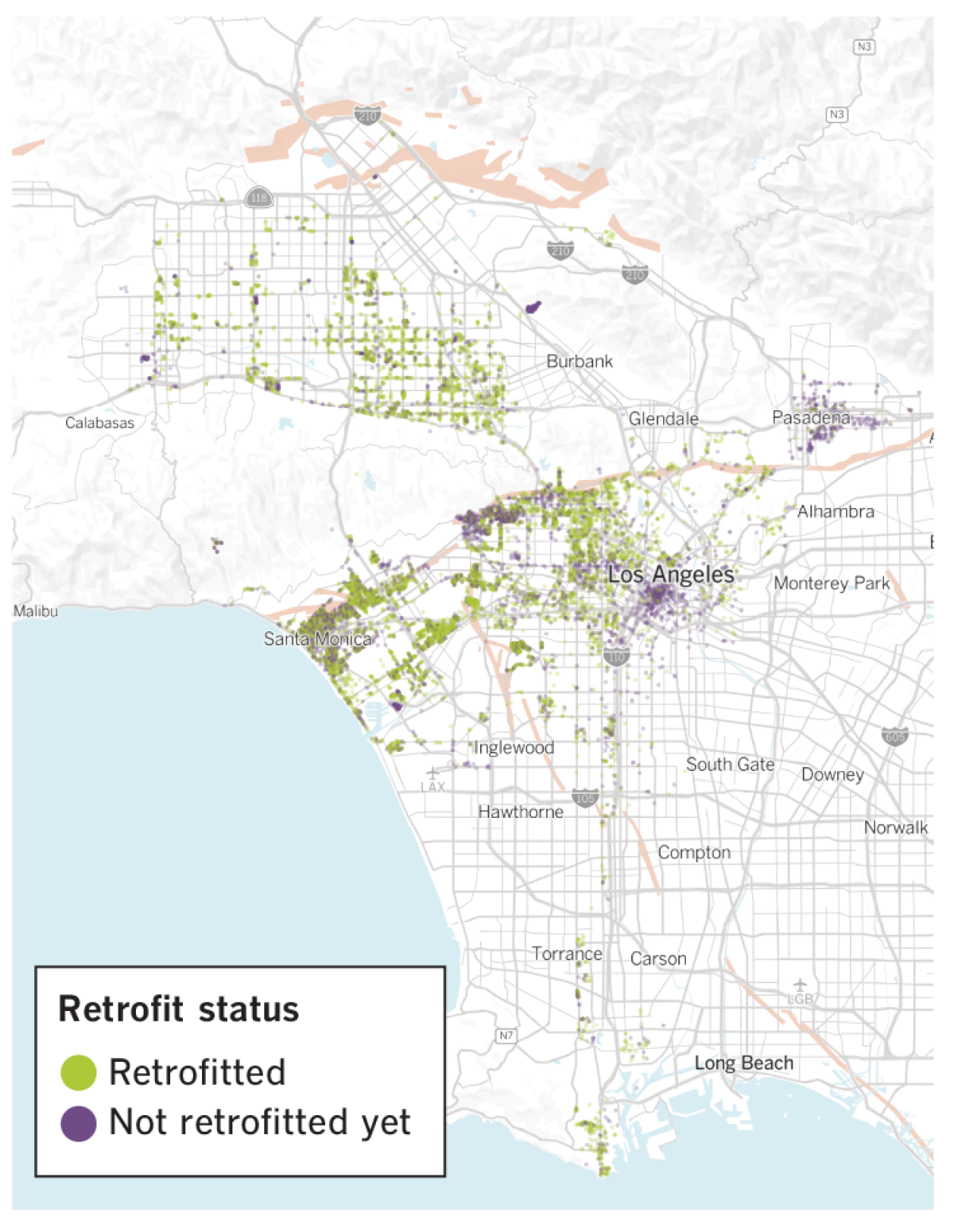
The Westside of Los Angeles, which is more affluent and has larger populations of white residents, has more completed retrofits and individual cities with ordinances requiring them. Areas with larger populations of people of color and lower-income residents, such as South Los Angeles, are less likely to see completed retrofits.
Neighboring cities in the area, such as Inglewood and Compton, don’t have retrofit ordinances on the books — so we don’t know how their retrofitting efforts look. Retrofits can take several years to complete. Retrofitting downtown Los Angeles’ many non-ductile concrete buildings probably won’t be complete for decades.
In the South Bay, Torrance officials passed an ordinance in March. Culver City is also working on sending out notices to properties that need retrofitting. Once officials have identified the buildings, the Los Angeles Times will add these places to our map.
Getting this data together was not an easy task. The county doesn’t have requirements that cities within it must adhere to, leaving them to decide whether to pass an ordinance and what types of buildings to include.
To assess properties, city officials survey building plans and Google Maps before deciding what type of rules to put in place. Many cities that have begun retrofitting programs started with soft-story buildings. I worked with each city to gather information on the retrofit status of buildings in the area. Some of the cities didn’t have the data compiled until we requested it. Some charged a fee for complete addresses. For one, I created a template spreadsheet officials could fill out. I also called engineers across the city to understand the retrofit process and read through paperwork that building owners are required to complete. Although there is a process for these reports, there are limitations on what the cities actually require and enforce.
While I was reporting on this story, I was looking for a new place to live, so I used our page to find the spot that wasn’t in a fault or a liquefaction zone — areas where the ground can break during an earthquake. Why I don’t want to live in Beverly Grove or Venice proved to be a great conversation starter with friends. Check out our map to see exactly why.
Do you have questions about seismic retrofits as I continue to dig into the data? Reach out to me [email protected].
Today’s top stories
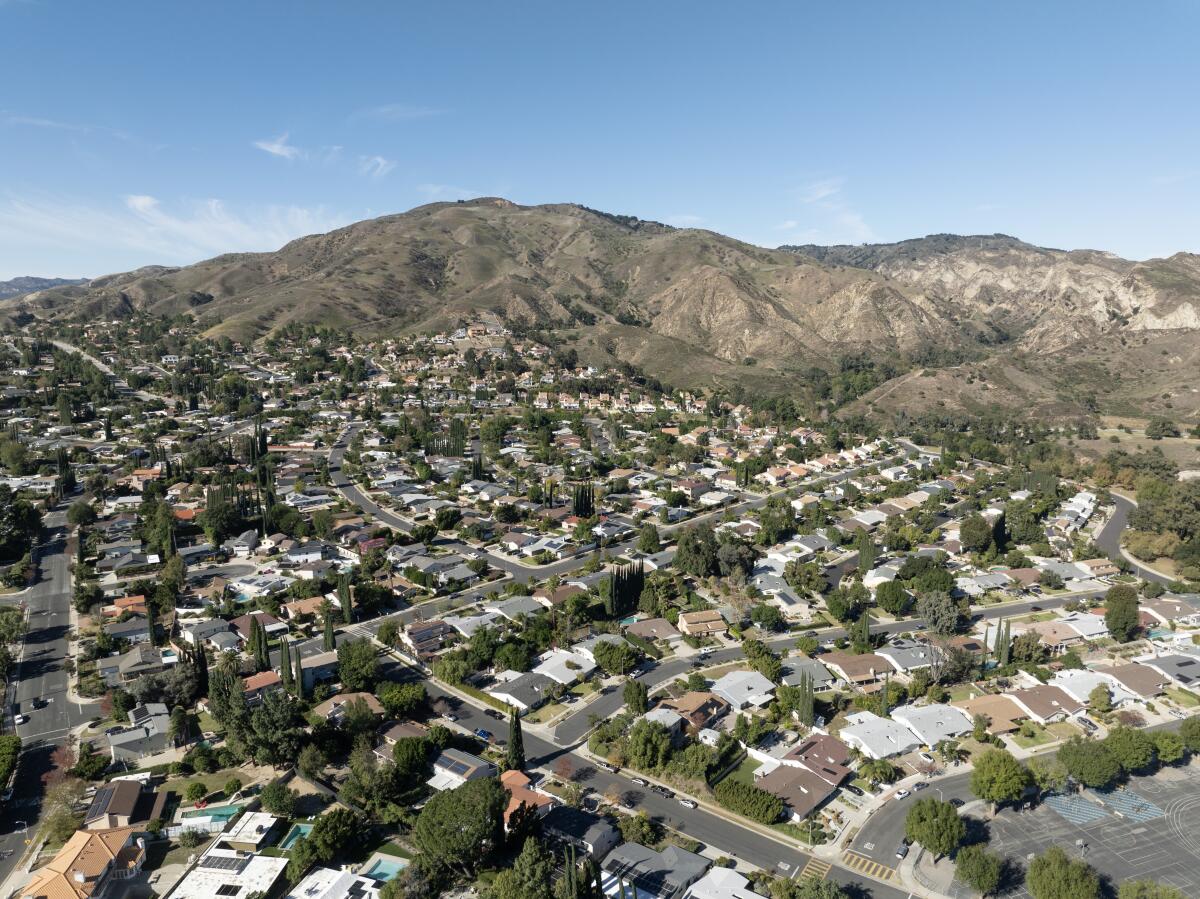
Climate and environment
- Unusual chemical reactions at L.A. County’s two largest landfills raise serious questions about the region’s long-standing approach to waste disposal.
- Blizzards, tornadoes and a hurricane: We lived through a year of weird weather in SoCal.
Business
- As California’s DMV accuses Tesla of false advertising, the carmaker says it has a 1st Amendment right to describe its vehicles as “Full Self-Driving.”
- Japan’s “Godzilla” studio Toho broke box-office records. Now its Hollywood footprint is expanding.
- Stiiizy’s founder built a legal cannabis empire — while being a landlord to black-market dispensaries.
- Ousted Fox News host Tucker Carlson is launching a streaming service.
More big stories
- Hoping to build an ADU? New grants can help low-income Californians get started.
- Nonprofit plans to transform a former oil drilling site in South L.A. into affordable housing.
- Supreme Court turns away a case threatening a California ban on gay “conversion therapy.”
Get unlimited access to the Los Angeles Times. Subscribe here.
Commentary and opinions
- Opinion: College presidents are supposed to be moral leaders, not evasive bureaucrats.
- Opinion: Same hospital, same injury, same child, same day. Why did one ER visit cost thousands more?
- Editorial: Time to defend California’s hard-won criminal justice reforms from lawmakers. Again.
- Jean Guerrero: No Republican presidential candidate can sound crueler than Trump on immigration.
- Gustavo Arellano: Shohei Ohtani is just the latest young person to leave O.C. for L.A. Surprise, surprise.
- Harry Litman: Hunter Biden isn’t being accused of any new wrongdoing. So why was he just indicted again?
Today’s great reads
At this exclusive members-only club, you can poop anywhere, but no humping, please. Elite social clubs have long been private playgrounds for the well-groomed, but one in Santa Monica has officially gone to the dogs.
Other great reads
- Melinda Sullivan, a tap dancer, and Larry Goldings, a pianist, improvise eclectic music together and bust out musical theater classics, which has amassed them a dedicated fan club.
- French soccer agent Takumi Jeannin is the man who engineered the creative contracts that made Alyssa Thompson and her sister Gisele part of Angel City.
How can we make this newsletter more useful? Send comments to [email protected].
For your downtime
Going out
- 🍹Latino holiday drinks: How to make them and where to find them.
- 😘 How to date better in Los Angeles when you feel surrounded by fakes, flirts and ghosts.
- 🍴Yes, L.A. is a biscuit town. Indeed, it’s a great biscuit town.
Staying in
- 📘 Samantha Harvey’s fifth novel, “Orbital,” follows six astronauts working at a space station. Call it a pastoral, but its true theme is human connection.
- 📺 Disney adds Hulu hub to Disney+ ahead of full integration.
- 🧑🍳 Here’s a recipe for Sicilian fig cookies.
- ✏️ Get our free daily crossword puzzle, sudoku, word search and arcade games.
And finally ... a great photo
Show us your favorite place in California! Send us photos you have taken of spots in California that are special — natural or human-made — and tell us why they’re important to you.
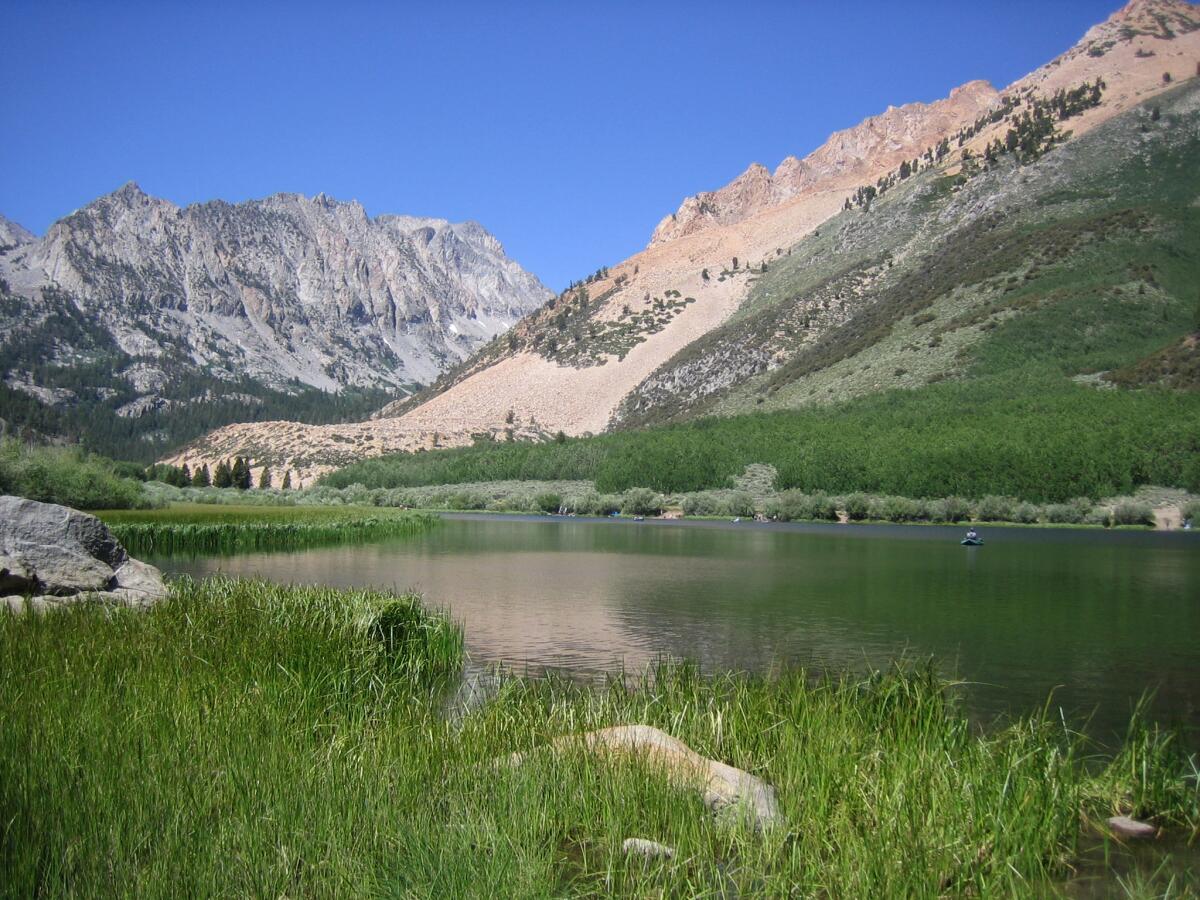
Today’s great photo is from Kathy Smith of Goodyear, Ariz. Kathy writes:
North Lake is situated at 9,500 feet on the North Fork of Bishop Creek. You must navigate a winding, one-lane road to reach it, but it is so worthwhile. The eastern side of the Sierra Nevada range has many gems like this.
Have a great day, from the Essential California team
Sandhya Kambhampati, data reporter
Elvia Limón, multiplatform editor
Kevinisha Walker, multiplatform editor
Laura Blasey, assistant editor
Check our top stories, topics and the latest articles on latimes.com.
Sign up for Essential California
The most important California stories and recommendations in your inbox every morning.
You may occasionally receive promotional content from the Los Angeles Times.
